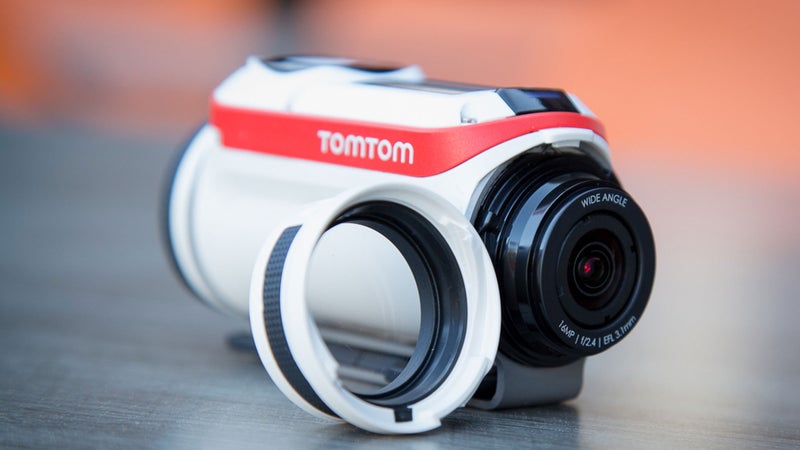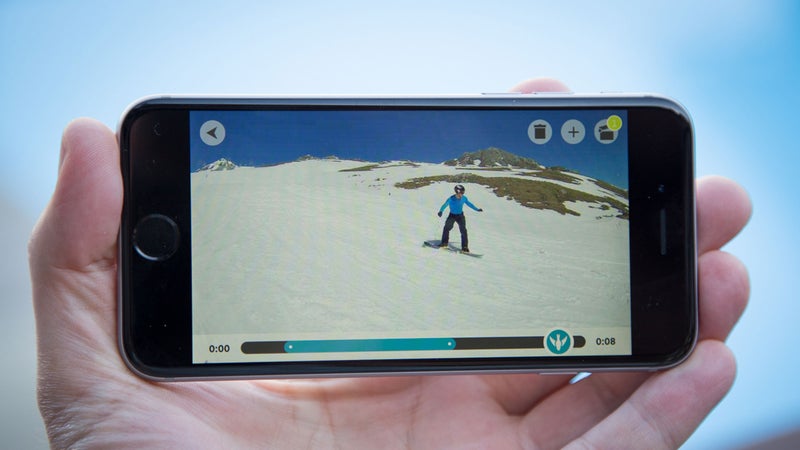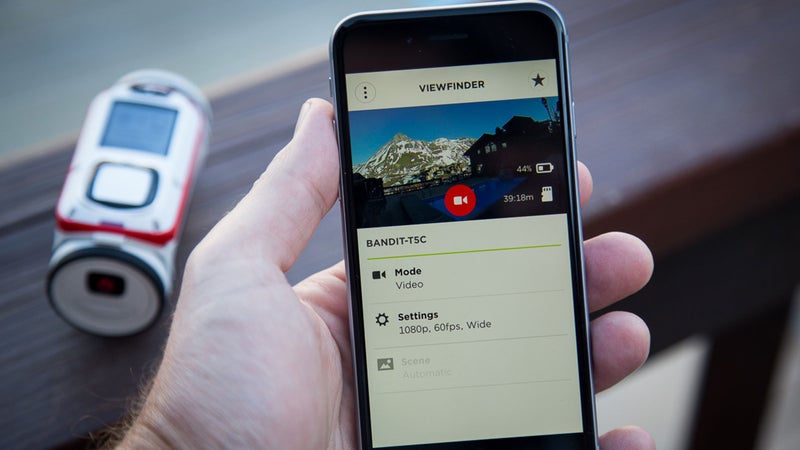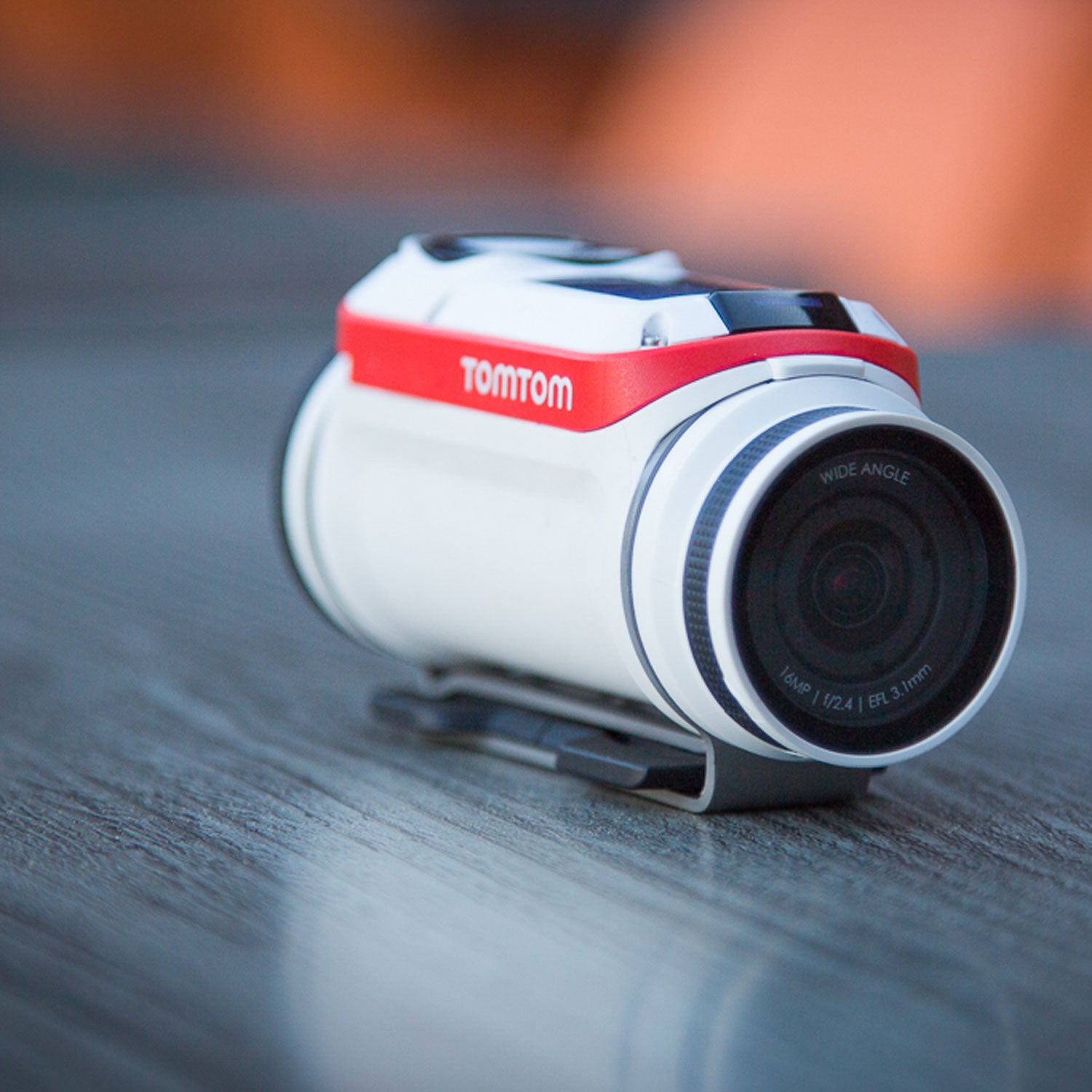, a Dutch company best known for its dashboard GPS navigation systems, announced last��month that it’s , and trying to eat a bit of GoPro’s lunch in the process.��
I guess we should have expected it. Garmin, TomTom’s chief rival, started with GPS nav systems, expanded to watches, and then moved to action cams—the same trajectory TomTom is now following.��
What we didn’t expect, though, is that its camera would be any good. But surprise! It is.

To put it through its paces, I travelled to the French Alps with the company for a three-day product testing session. Here are��my initial impressions:��
Hardware
The camera is oblong and aerodynamic, and looks more like than a GoPro. It’s bigger and heavier than a , but when used with the��detachable waterproof dive lens (optional), it doesn’t need an extra case to go down to depths of up to 164 feet (50m). Without that lens, it’s certified to be waterproof down to three feet for 30 minutes.��
On top of the camera sits a black and white LCD display that shows you what mode you’re in and how much battery and��storage space you have left.��
You change settings via a four-way navigation button, which looks almost identical to the one TomTom has on its exercise watches. It’s intuitive to use, and while the settings aren’t organized perfectly (video mode and cinema mode are oddly separated, for example), I think most beginners will find this camera easier to learn than a GoPro.��
The red button at the back of the camera turns power on, starts recording, and adds highlight tags to make the good moments (theoretically) easier to find once you’re done shooting. (More on this in a bit.)����
The stop-recording and power-off button sits��on top the camera. This is a clever move, as it ensures you won’t accidentally start then stop filming. That said, both buttons are very stiff and fairly small, and I had trouble depressing them on several occasions, especially with gloves on. There’s��a small (optional) wrist-worn remote control that can control these buttons.��
The coolest hardware feature, though, has got to be the Batt-Stick. It’s a big battery at 1900 mAh (compared to 1160 mAh on the GoPro Hero4 line), which means you’re less likely��to need a charge in the middle of the day.��
Even cooler: it has a male USB 3.0 connection built into it, meaning you don’t have to worry about charging cables again. Just stick it into the closest USB port. The micro SD card slot is on the stick, too, giving you instant access to all your video files on the computer. There are also four LED indicators on the Batt-Stick to show current charge.��

The Bandit will come in two packages: basic, which includes two sticky mounts and a GoPro-mount adaptor (smart, because there are many high-quality GoPro mounts on the market right now); and premium, which comes with all those add-ons, plus the waterproof dive lens, a three-axis tilting mount, a charging cable, and a remote control. The main takeaway: If you plan to shoot anywhere near the water, you’ll want the premium package.��
Shooting Modes
Spec-wise, the Bandit is almost identical to the . Its go-to shooting modes are 1080p at 60 frames per second and 1080p at 30fps, but it can also stretch to 2.7k video at 30fps, and 4k at an unusable 15 fps. (Seriously, don’t ever shoot anything at 15 fps unless you hate your eyeballs.)��
The Bandit also has a slow-motion mode, which essentially shoots at 1080 at 60fps, then slows the footage down to 30fps, giving you half-speed slow motion. It’s not a bad option for a quick iPhone edit. You can also use the slow-motion mode at 720p, which will give you quarter-speed slow-mo or WVGA for sixth-speed slow-mo, but I don’t recommend using these lower resolutions.
It can shoot stills and bursts, and cut together a time-lapse—no editing software required. There are options for wide or normal field of view, too.��
GoPro offers more options—like shooting in 24fps (which I do when I’m less concerned with high-speed action and prefer a more cinematic look, like when I’m diving), and letting you control exposure (key if you want to take long-exposure��time-lapses)—than the Bandit. TomTom has eliminated a lot of these manual tweakability choices in favor of keeping user interface simple.��
Footage

Check out , with the understanding that YouTube compresses files, so it looks much better on my computer than it��does on the web. That said, it’s still a decent base for comparison, and guess what? The TomTom Bandit’s footage looks��pretty good.��
Colors are nice and bright, and it captures a wide, dynamic range. There isn’t a lot of digital noise in the images. Audio is decent, except for the harsh wind noise. (TomTom says it’s currently working on a mic baffle to dampen wind noise when you’re using the standard lens.)��
Now, the Hero4 footage is sharper, full stop. It captures more detail than the Bandit. However, the Bandit isn’t too far behind in detail, and, in some areas, it seems to beat out the GoPro.��
In the snow shots, for instance, the Bandit shots look better. Take the video above:��the image captured by the Bandit is brighter than the one shot by the GoPro. The colors on my red jacket and blue shirt are��brighter and truer to reality. The sky from the Bandit footage is��clear, whereas there’s some strange, dark, digital noise in the Hero4’s shots.��
In other situations, the GoPro footage looks better. In the shots of the buildings you see at 2:07 and 2:37 in the video, the detail on the GoPro is much cleaner. The lighting is great, and the colors are more accurate.��It’s the same story with the low-light test.��
Ultimately, I’ll have to do more testing in varied environments before I can make a final call about which has the better image quality, though I’d be very surprised if the Hero4 doesn’t come out on top in the end. But the fact that I still need to run more tests is an achievement for TomTom. It’s usually��obvious when the Hero blows its competitor out of the water, and this is close enough to not be obvious. For a first-generation product, that’s damn��impressive.
The App: Shake to Edit

One of the Bandit’s banner features is its mobile app with quick capabilities. The idea:��you pair a��phone with the camera when you finish a run (while snowboarding, say), shake the phone, and the editing software will automatically cut together a one-minute video using the best parts of your run. Sounds too good to be true, right? Well, it��is. But the software's��not an outright failure, either.��
The hard part for the camera is determining what footage to select. You can manually add a highlight tag by pressing the red button on the camera just after the footage you want to use. But in addition to that, the Bandit uses its sensors to add highlight tags when it senses��sudden accelerations or decelerations, vertical drops, changes��in G forces, quick rotations, when you hit top speed, and more.��
It’s a neat idea that doesn’t work that well in practice. In my testing, I found that the camera rarely (say one out of eight times) marked the highlights I wanted.��
There’s also some trouble with when they’re marked. Even when the Bandit��managed to automatically highlight a nice turn or jump, the six-second highlight didn’t usually capture the entire moment. You can manually adjust the clip's length and in and out points, but that kind of defeats the purpose.��
The only thing it seemed to be able to highlight regularly? My wipe-outs. I rolled with it and, using the app, was able to cut together in less than 10 minutes on an iPhone.��
You can add music from your iPhone to your video, and because the Bandit has GPS, you can add an overlay for your speed or acceleration (with more overlays coming in the future). It’s worth noting that Garmin and both give you more options for overlays, but both rely on desktop editing software.��
The TomTom app also has a live-view mode, which��can be used to��frame��your shot.
Note: The app is currently available only for iOS. An Android version is in the works, but it��sounds like it will be more limited.��For instance, you won't be able to add the speed overlay.��A PC version is coming at some point, too.��
The Verdict
The bottom line:��For a first-gen product, I’m impressed.��
The Bandit basic will be available for $400 this June in the U.S. The premium package (which includes the same camera, with just a few more bells and whistles),��will cost $500, to be released later this summer, according to the company. By comparison, the Hero4 Silver costs $400, while the Hero4 Black comes in at $500.��
Now, the Bandit offers some things that GoPro doesn’t—built-in GPS, the capability of pairing with a heart-rate sensor, an auto-editing app—but��GoPro still has the edge when it comes to spec options and photo quality.��
But the fact that it’s such a close call is a win in and of itself for TomTom.��


